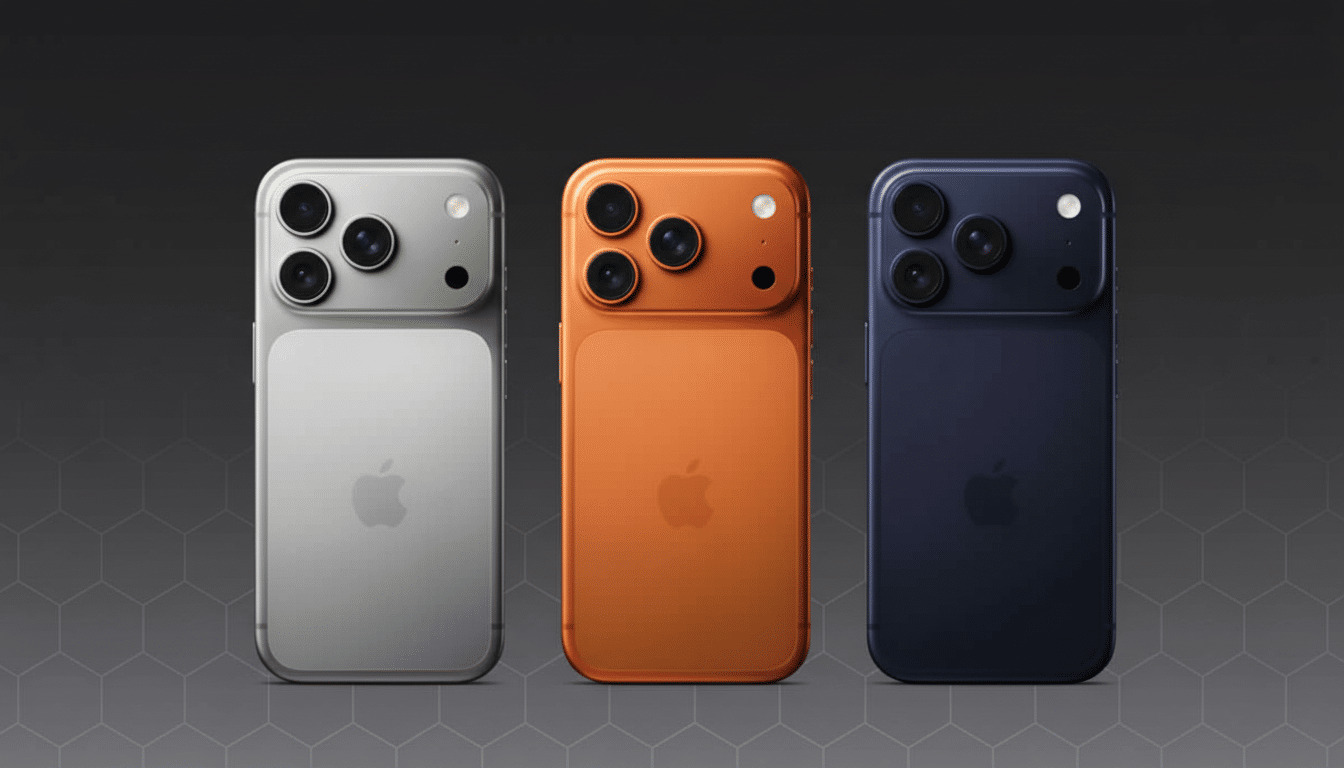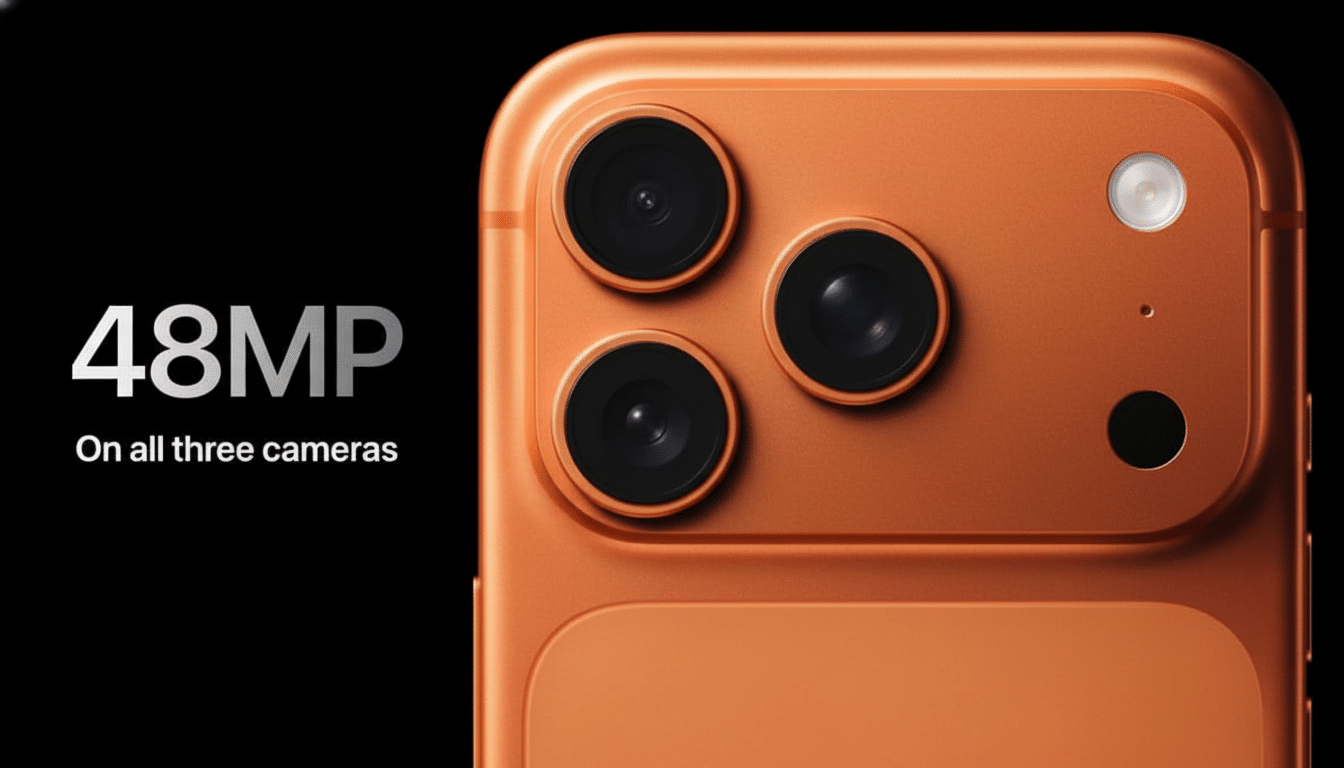Apple’s iPhone 17 Pro and Pro Max come with no bones to pick to the Android elite: yes, three 48MP cameras, period. With a new 48MP telephoto (to go with 48MP main and 48MP ultrawide), Apple has normalized high-resolution imaging above all else, while showing real video tools shooting with creators as much in mind as casual shooters.
Triple 48MP everywhere
The Pro models have a 48MP wide camera (f/1.78), a 48MP ultrawide (f/2.2), and—crucially—a 48MP periscope telephoto (f/2.8). That’s a break with Apple’s tradition of relying on a 12MP zoom. In real life we get the ability for more capture of detail and cleaner in sensor zoomed crops, especially in brighter conditions.

Apple claims the new tetraprism module is 56% larger than that in the last generation — a figure that usually means better light intake and more room for stabilization. Anticipate sharper textures and sturdier frames at longer focal lengths, because handshake can easily blur shots on smaller optics.
Like the main 48MP, the tele and ultrawide will again rely on pixel binning, outputting 12MP shots with better dynamic range and lower noise. That consistency is important for computational photography: It gives Apple’s image pipeline consistent data across three different viewpoints, which should lessen the color and detail shifts when you jump between lenses.
Telephoto without the girth
The headline spec is 4x optical zoom at a 100mm equivalent, the sweet spot for portraits and compressed landscapes. Up to 8x is also claimed by Apple around the 200mm mark – the longest optical setting yet seen on an iPhone – and here the aforementioned 48MP sensor is used for loss-limited crops where light permits.
That’s a big step up against the high-end Android flagships. Samsung’s Galaxy S24 Ultra has a 50MP 5x periscope on or around 111mm and Xiaomi’s 14 Ultra employs multiple 50MP modules covering 23mm to 120mm (and beyond via crop). Vivo and Oppo also been advocating 50MP periscopes. Apple takes a different approach: not maximum optical reach on paper, but rather a focus on maintaining consistent resolution, faster apertures and computational finessing to keep color and tone consistent across all three lenses.
In non-paper-tiger reality, that’s often more valuable than sheer zoom numbers. A clean 2x or 8x crop from a dense 48MP base, combined with Apple’s multi-frame fusion, should bridge the gap in mid-telephoto shots where many phones currently get by with heavy sharpening or aggressive noise reduction.

Pro video features enter cinema territory
Apple is pairing the hardware push with creator-centric video tools: ProRes RAW capture and 4K 120fps in Dolby Vision, genlock support for synchronized multi-camera shoots. Genlock is unusual in phones and it speaks right to professional workflows — live production, multicam music videos or on-set previz — where frame-accurate sync cuts down on post headaches.
On paper, here are a few Android rivals who still check boxes Apple doesn’t emphasize, whether that be 8K recording on Samsung flagships or elaborate manual suites on Sony’s Xperia line. But Dolby Vision at 120fps and true RAW workflows are targeting a different audience – filmmakers after flexible grading latitude and accurate color science. The lineage exists; directors such as Steven Soderbergh have already shown what can be done with iPhones on set.
Implications for Android flagships
Android flagships have leaned heavily into imaging over the past two years, as larger sensors, variable apertures, and stacked 50MP arrays have become the norm. Because here, Apple’s leap to triple 48MP has nothing to do with chasing headline zooms; it’s an efficiency play that rides along the rails of uniform resolution, tight lens matching, and Apple Silicon’s image signal processing on the way to reliable results shot to shot.
That might reset expectations for cross-lens consistency; many devices still have visible differences in color temperature or detail rendering between ultrawide, wide and telephoto. If Apple’s trio functions as though it were one camera system, look for Android brands to retaliate with more accurate color matching faster ultrawides, and higher-resolution teles to keep up on mid-zoom detail.
There’s a business angle too. Cameras have become a top shopper priority for pricier phones, research companies like Counterpoint Research say. If that aggressive strategy from Apple makes for happier users, Android OEMs will feel the pull heading into next year’s refreshes.
Pricing and who benefits the most
The iPhone 17 Pro begins with 256GB of storage and climbs up to 1TB; the Pro Max starts at 256GB and steps up from there to a new 2TB tier. Pricing falls in line with the Pro premium you’d expect and won’t shock anyone in flagship territory. For content creators, the storage headroom also plays nicely with ProRes RAW and high-frame-rate Dolby Vision, which can be data-intensive during long shoots.
The rest of us have an easier story: three lenses, one resolution class, fewer compromises. Android adversaries retain an advantage in some niches — ultra-long periscope zooms, say, or massive main sensors — though Apple’s all-48MP approach makes for a decisive, coherent response that lifts the baseline for flagship photography.
Bottom line: the iPhone 17 Pro isn’t won by one spec. It wins by bringing every lens to the party and treating them all as first-class citizens — and that’s exactly where the next Android showdown is probably going to go down.

